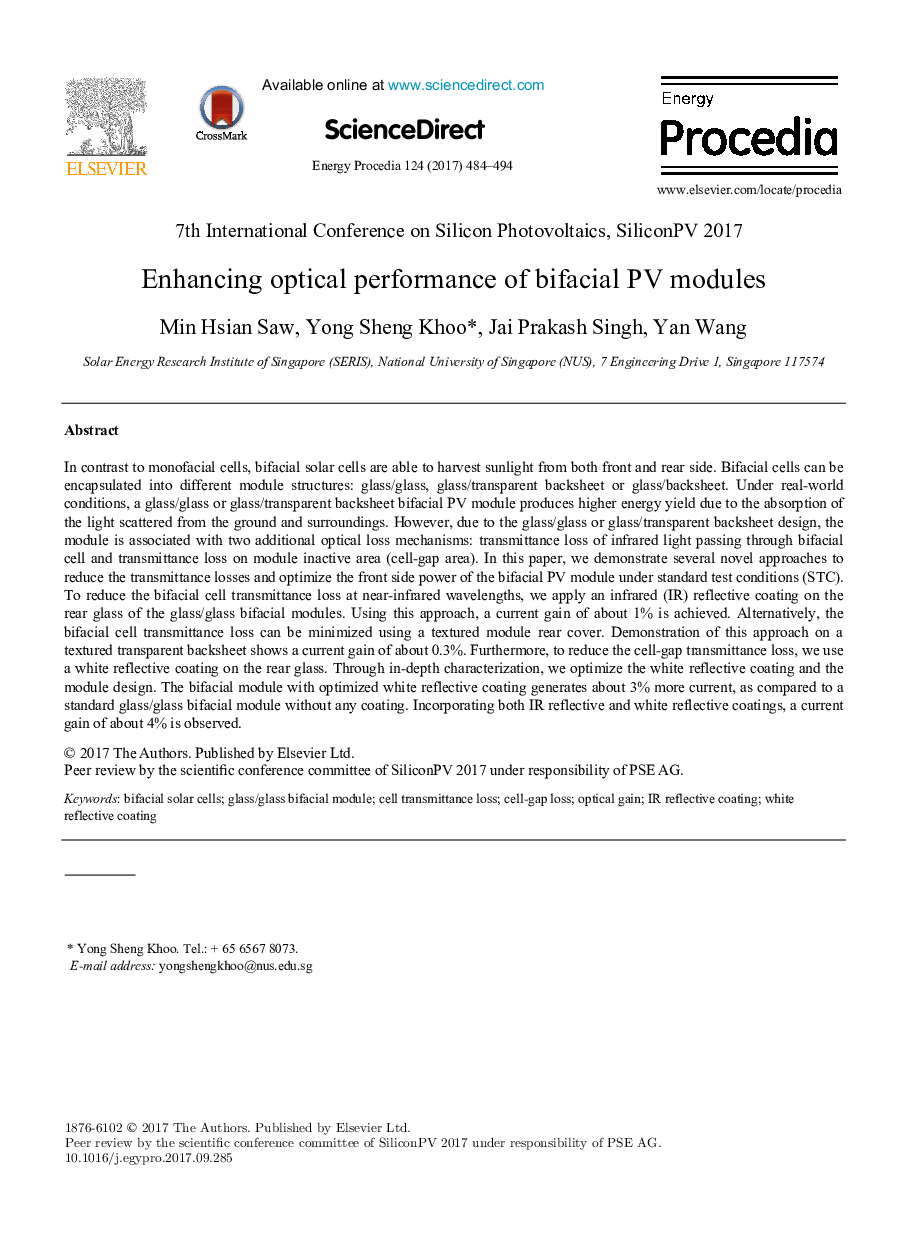| کد مقاله | کد نشریه | سال انتشار | مقاله انگلیسی | نسخه تمام متن |
|---|---|---|---|---|
| 5444597 | 1511111 | 2017 | 11 صفحه PDF | دانلود رایگان |
عنوان انگلیسی مقاله ISI
Enhancing optical performance of bifacial PV modules
دانلود مقاله + سفارش ترجمه
دانلود مقاله ISI انگلیسی
رایگان برای ایرانیان
موضوعات مرتبط
مهندسی و علوم پایه
مهندسی انرژی
انرژی (عمومی)
پیش نمایش صفحه اول مقاله

چکیده انگلیسی
In contrast to monofacial cells, bifacial solar cells are able to harvest sunlight from both front and rear side. Bifacial cells can be encapsulated into different module structures: glass/glass, glass/transparent backsheet or glass/backsheet. Under real-world conditions, a glass/glass or glass/transparent backsheet bifacial PV module produces higher energy yield due to the absorption of the light scattered from the ground and surroundings. However, due to the glass/glass or glass/transparent backsheet design, the module is associated with two additional optical loss mechanisms: transmittance loss of infrared light passing through bifacial cell and transmittance loss on module inactive area (cell-gap area). In this paper, we demonstrate several novel approaches to reduce the transmittance losses and optimize the front side power of the bifacial PV module under standard test conditions (STC). To reduce the bifacial cell transmittance loss at near-infrared wavelengths, we apply an infrared (IR) reflective coating on the rear glass of the glass/glass bifacial modules. Using this approach, a current gain of about 1% is achieved. Alternatively, the bifacial cell transmittance loss can be minimized using a textured module rear cover. Demonstration of this approach on a textured transparent backsheet shows a current gain of about 0.3%. Furthermore, to reduce the cell-gap transmittance loss, we use a white reflective coating on the rear glass. Through in-depth characterization, we optimize the white reflective coating and the module design. The bifacial module with optimized white reflective coating generates about 3% more current, as compared to a standard glass/glass bifacial module without any coating. Incorporating both IR reflective and white reflective coatings, a current gain of about 4% is observed.
ناشر
Database: Elsevier - ScienceDirect (ساینس دایرکت)
Journal: Energy Procedia - Volume 124, September 2017, Pages 484-494
Journal: Energy Procedia - Volume 124, September 2017, Pages 484-494
نویسندگان
Min Hsian Saw, Yong Sheng Khoo, Jai Prakash Singh, Yan Wang,